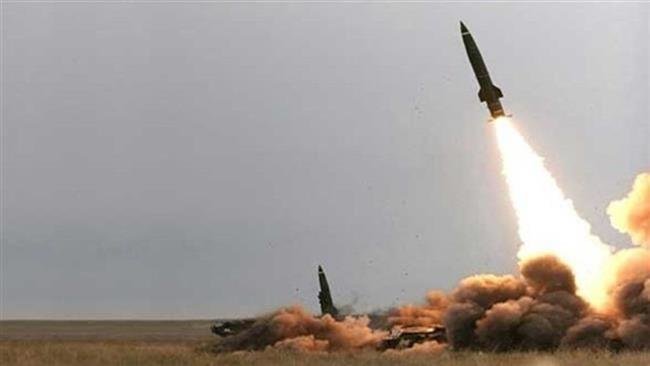Foreign Policy claims Iranian, American-made parts in Houthi missiles

On November 4, a Yemeni tribal group called Houthi launched a short-range ballistic missile from a remote valley in the northwestern governorate of Amran over 1,000 miles to the outskirts of Saudi Arabia’s capital, its warhead exploding on the edge of the King Khalid International Airport.
Saudi Arabia and Washington were quick to accuse Iran of having provided the missiles, leading to the UN team investigating into the matter.
Foreign Policy on Friday claimed that an examination of key missile fragments, documented last month in a confidential UN report, supported U.S. claims that the missile was comprised of Iranian hardware. But the report, which was reviewed by Foreign Policy, provided a new twist: The weapon also included a component that was manufactured by an American company.
The White House sees the missile strike as an opportunity to rally international sentiment against Tehran, and to lessen Washington’s diplomatic isolation, which has deepened with President Donald Trump’s rejection of the landmark 2015 Iran nuclear deal negotiated by his predecessor, Barack Obama.
“The Iranian Islamic Revolutionary Guard Corps and its partners are arming, advising, and enabling the Houthis’ violent actions, which accelerate the cycle of violence and human suffering, obstruct the flow of humanitarian aid, and disrupt efforts toward a political resolution,” according to a statement released on Friday night by the White House press secretary.
In recent weeks, Nikki Haley, the U.S. ambassador to the United Nations, has pressed the Pentagon and U.S. spy agencies to declassify intelligence linking Iran to the Nov. 4 attack as well as other Iranian infractions, while U.S. national security officials have lobbied the UN. The U.S. goal, an official was quoted by Foreign Policy as saying, is to get UN Secretary-General Antonio Guterres to present the UN’s strongest case to date of Iranian sanctions violations in a report due out next week.
In an unpublished report distributed to Security Council members on Friday, Guterres said the United Nations is “carefully reviewing” all the evidence related to Houthi missile attacks in Yemen, including the Nov. 4 strike. He urged the Security Council committees responsible for enforcing Yemen sanctions and monitoring the Iran nuclear deal to receive a briefing on the UN’s findings.
But the investigation also produced a surprise.
The missile, painted blue with “Borkan 2-H” written in white paint, contained another component — a set of carbon fiber compressed air bottles that circulate liquid jet fuel in the missile — manufactured in the United States, according to the UN panel’s report. The panel has reached out to the manufacturer, which was not named in its report, to find out how its technology found its way into a Houthi missile.
The question of how an American-made part found its way into the fabrication of the Houthi rebels’ most advanced missile is a missing piece in an enduring puzzle UN investigators have been struggling to solve.
There are a number of contingencies arising from the fact that the missile included U.S.-made parts. First, it could serve arguments by Iran and its allies, including Russia, that the weapon was not produced by Iran.
The report’s findings appear to lend support to an analysis of a missile research team and published in the New York Times, which challenged claims made by President Trump, who said that a U.S. supplied Patriot missile defense system in Riyadh “knocked the missile out of the air.” Photos show that the Borkhan’s rocket motor and other components landed well short of their target, but that missile warhead landed perilously close to the airport.
The second possibility is that either Iran or the U.S. have tried implicating each other in the rockets case. This is however unlikely because in that case only parts made by one side would have been found in the debris.
The third, more likely possibility, is that the local Houthi forces have managed somehow to take different parts from different sources and make their own missiles.
The UN report comes as Saudi Arabia faces increasing pressure to ease the rapidly worsening humanitarian situation in Yemen.
At the start of Yemen’s war, Houthi rebels inherited a government stockpile of Scud C missiles and the Hwasong-6 series short-range ballistic missile.
But the Houthis introduced a more advanced missile into the battlefield in October 2016, raising the risk that it could strike deep into the heart of Saudi Arabia. The latest version had “significant design differences” from the Scud C and Hwasong-6 missiles, which are fashioned with heavy steel exterior that slows its trajectory.
In contrast, the Houthi Borkhan H-2 was made with a lighter aluminum skin and a more advanced guidance system that negated the need for wings used on other Scuds.
